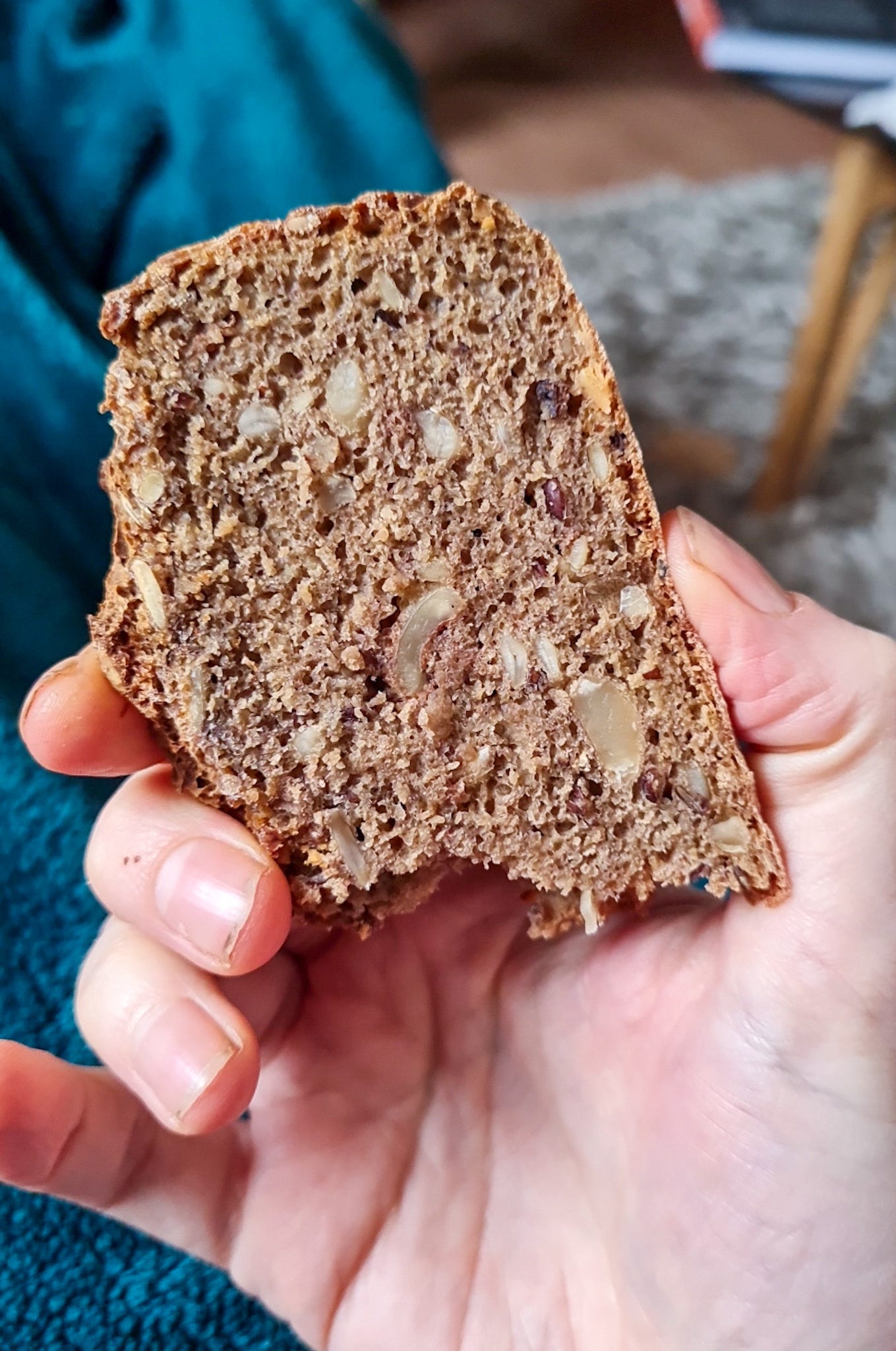Sometimes, I start a recipe and then completely forget it ever existed. Life happens—you go to work, you do chores, you live your life. And then, suddenly, you realize: Wait… didn’t I make a bread dough yesterday?
Panic sets in. You rush to your secret bread dough cupboard, and there it is: your rye and chestnut dough, proofing for God knows how long—at room temperature no less! I can already hear Paul Hollywood sighing in despair.
But then, hold on—it actually looks…sort of… good? Flabbergasted, you decide to bake it anyway, bracing yourself for disaster. But miraculously, the result is amazing: An incredible flavour, a great texture, a perfect bake. Somewhere, Paul Hollywood is smiling.
But let’s rewind. How did I forget about my own dough?
Simple: I have cats. One of them—Pinot—affectionately nicknamed Carb Cat, has an insatiable love for anything bready. If it’s made of flour, he wants it. And yes, even raw dough—which, after a quick Google search, turns out to be very bad for cats.
So, being a responsible cat parent, I placed my dough somewhere safe. Out of sight, out of reach, out of Carb Cat’s dangerous little paws. I tucked it away in a cupboard, intending to return in two hours to bake it.
But then, life happened. Because I had no visual reminder on the counter, I completely forgot I was making bread in the first place. I went to work, cooked dinner, took a shower, watched The Night Agent on Netflix, went to bed—all blissfully unaware that a forgotten dough was slowly transforming in my kitchen cupboard.
And then, I remembered. The sheer horror on my face made my boyfriend think someone had died. (Possibly Paul Hollywood’s faith in me. RIP.)
But against all odds, the dough looked fine. No—better than fine. It looked amazing. And the end result? Even more heavenly.
Now, why did this work? Normally, forgetting your bread dough at room temperature for 24 hours would lead to overproofing—where the yeast exhausts itself and the structure collapses. But rye flour plays by different rules. Unlike wheat-based doughs, rye doesn’t develop strong gluten strands. Instead, its structure comes from pentosans — a type of sugar that holds moisture and creates a dense but tender crumb. This means it’s much more forgiving to long fermentation times ( and a great wheat-flour alternative to work with when you’re more the forgetful type. )
The chestnut flour, naturally sweet and slightly nutty, added even more complexity to the flavour. The result? A loaf that tasted like a labour of love, even though I had entirely abandoned it (oops) .
So, sometimes, accidents really do turn into miracles. Thanks to rye flour, my forgetfulness was forgiven. Paul Hollywood lives. All is well.
Praise the baking gods.
This rye and chestnut bread is a heavenly combination of flavourful, rich rye and nutty, sweet chestnut. A wintery combo that truly feeds the soul. For an added touch of depth, I added some black tea on top of the usual water and stirred in some umami-rich miso. This adds an incredible flavour, as if you've just made an amazing sourdough loaf, but without the actual sourdough fussiness. It tastes like a loaf you've worked your ass off to make, when in reality, it is so simple you actually forgot about it entirely.

Forget-Me-Not Rye & Chestnut Loaf Recipe
Ingredients:
400 g rye flour
125 g chestnut flour
1 tsp salt
1 tsp instant yeast
200 ml water
200 ml black tea, cooled
1 tbsp rapeseed oil
1 tbsp dark molasses
50 g delicious miso (I used a chestnut & fig unpasteurized miso from Pekel, but any miso will work)
200 g roasted chestnuts, chopped
Method:
In a jug, combine the water, cooled black tea, and yeast. Let sit for a few minutes until the yeast starts to bubble.
Stir in the molasses, miso, and oil until smooth.
In the bowl of an electric mixer, combine the rye and chestnut flour with the salt. Slowly pour in the wet mixture while mixing on low speed. Let the mixer knead for about 5 minutes. The dough will be wet and heavy—this is totally normal.
Stir in the chopped roasted chestnuts, then transfer the dough into a long bread tin. No need to shape it—just spread it out evenly.
Lightly oil the top, cover with a clean towel, and place somewhere safe from pets. Now …forget about it for the next 24 hours.
When you remember it exists, preheat the oven to 190°C. Bake for approximately 1 hour.
Let cool completely before removing from the tin and slicing into this marvelous, accidental wonder of a bread.
Enjoy—preferably in a place where Carb Cat can’t steal a bite.





